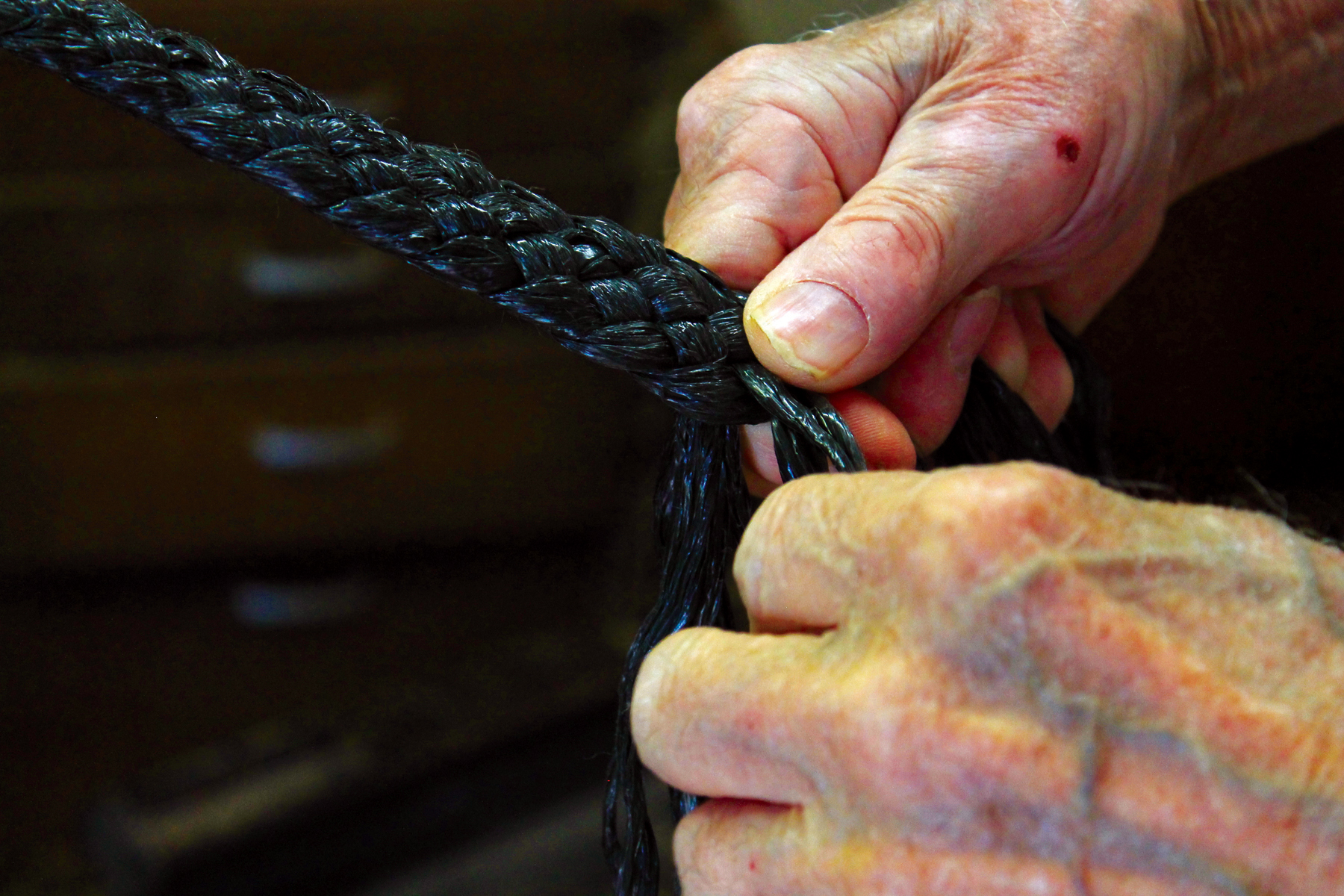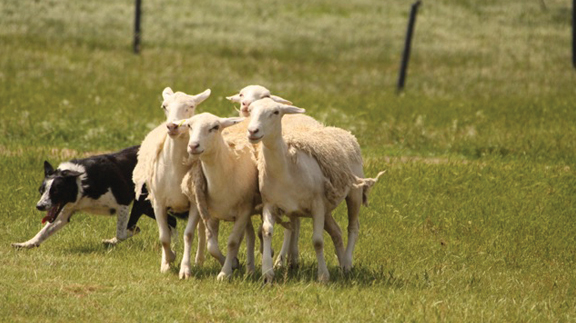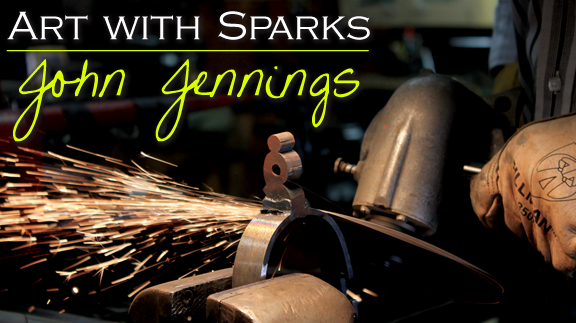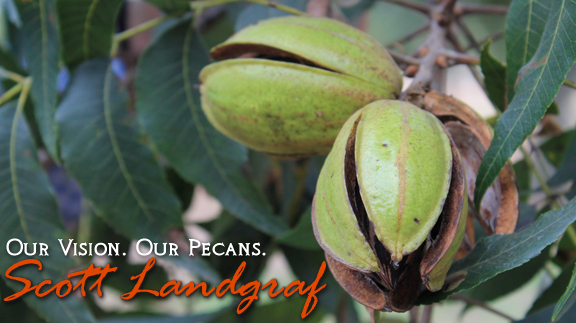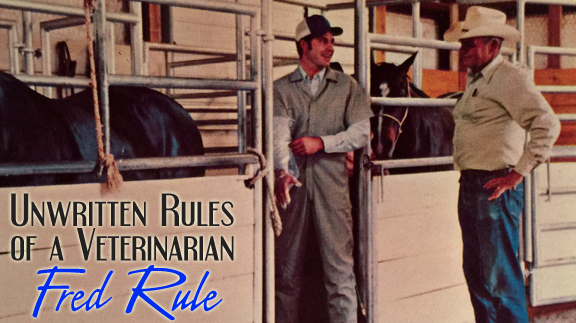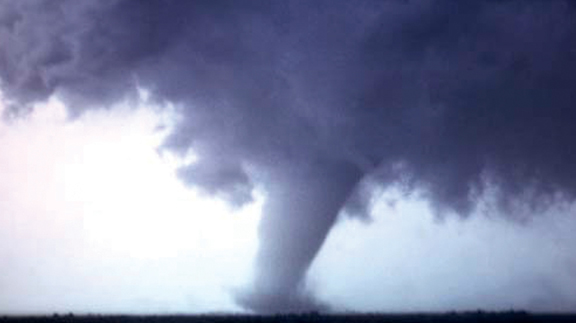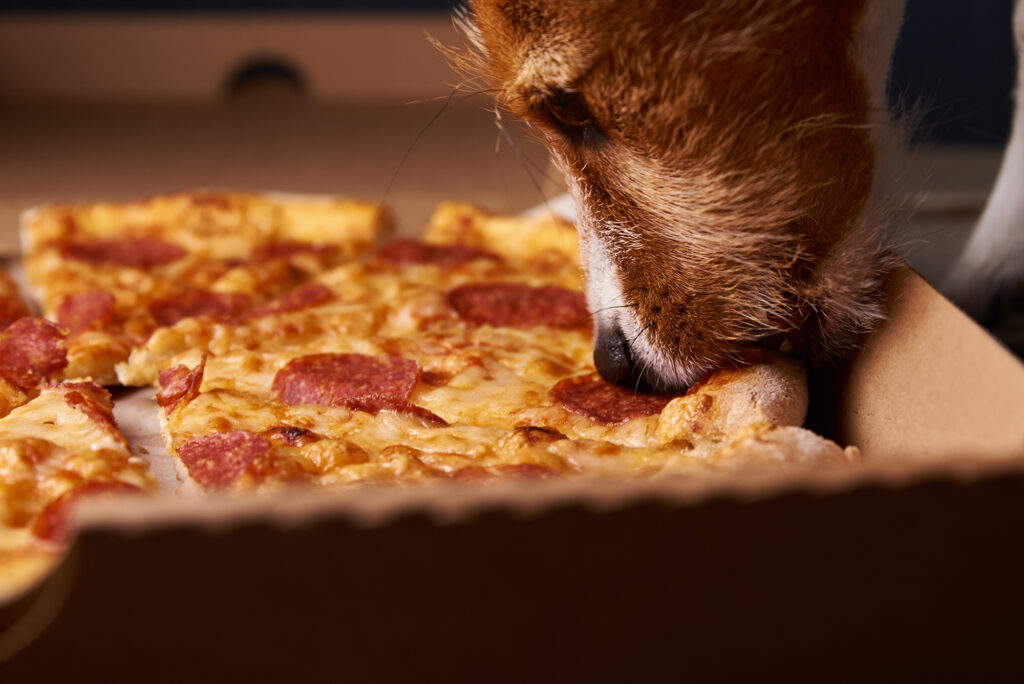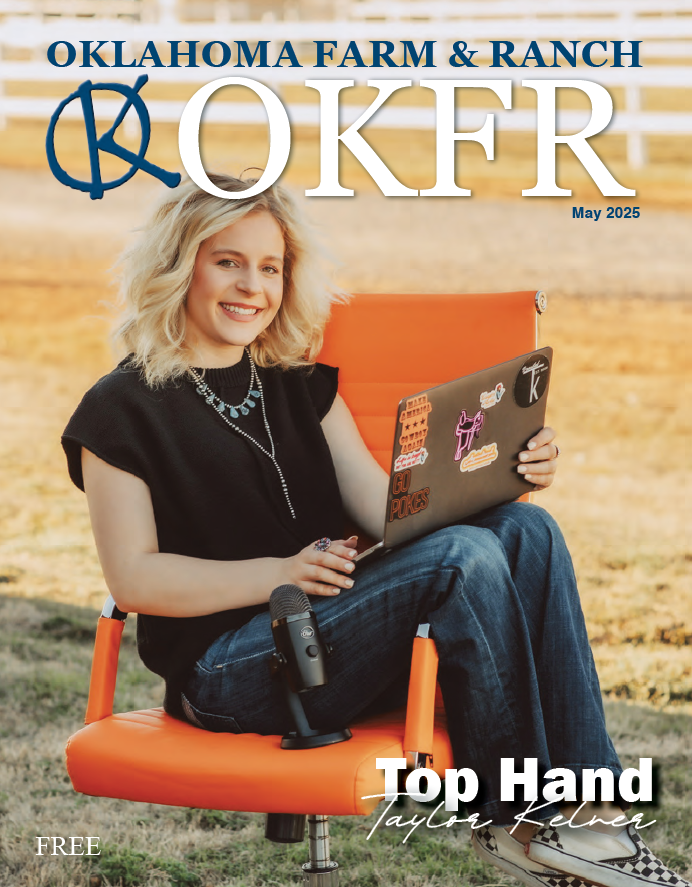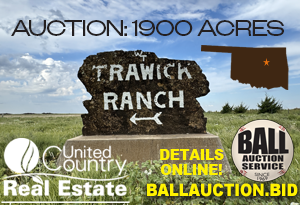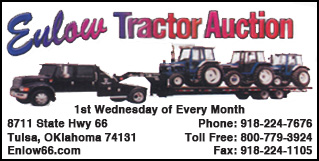Country Lifestyle
January 2018 Profile: Dick Carr
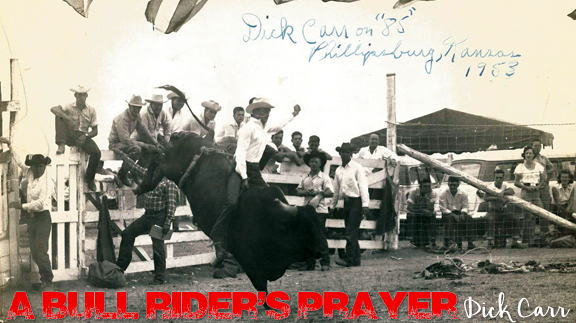
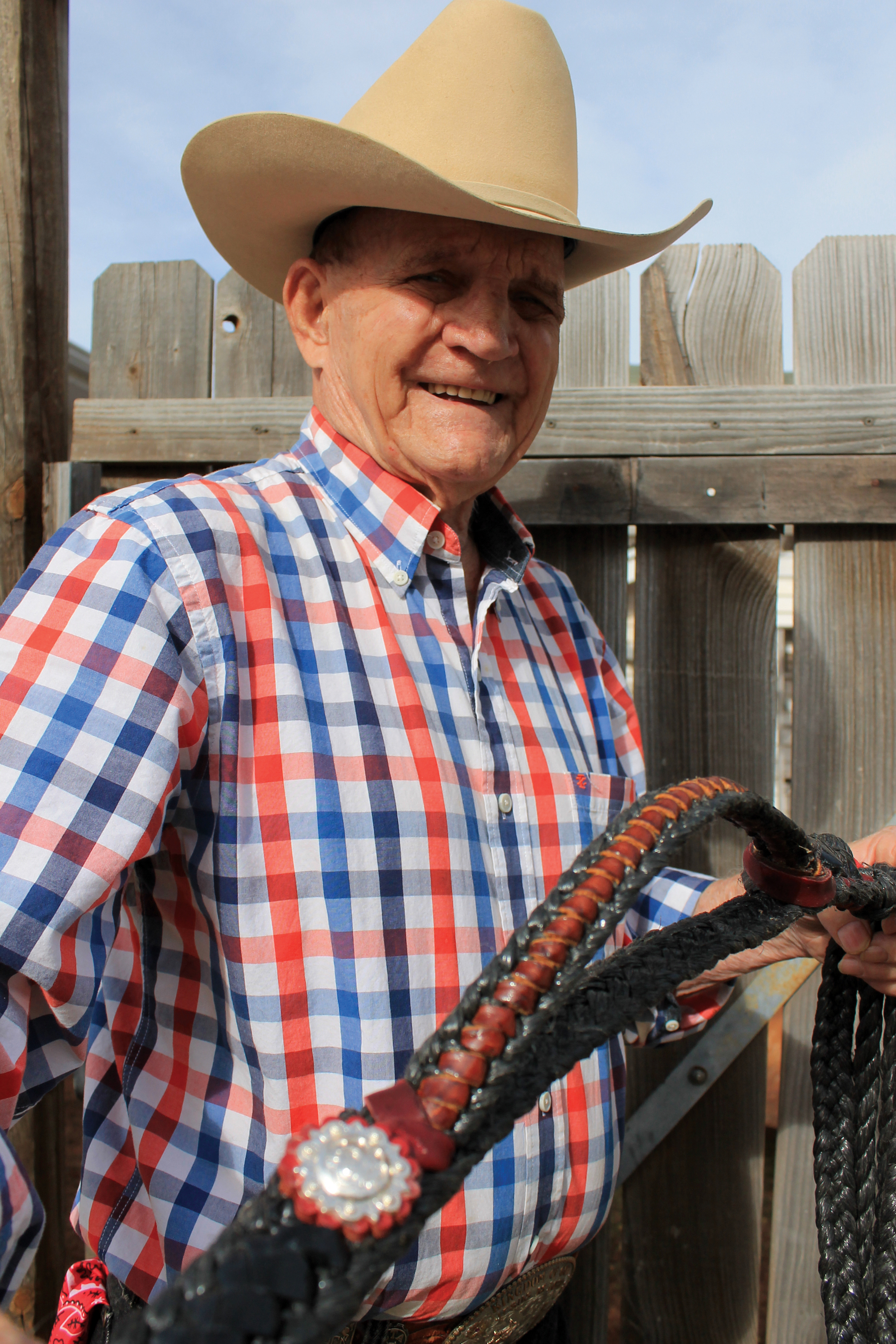
Carr’s first bull riding ropes sold for $10 apiece. Today, they start at $400. (Photo by Laci Jones)
A Bull Rider’s Player
By Laci Jones
At 84-years-old, former professional bull rider Dick Carr believes in the power of prayer, especially when making his renowned bull ropes. At his home in Elk City, Okla., he grabbed a bottle of oil, poured a few drops on his weathered fingertips and delicately held a bull rope.
He closed his eyes and said the prayer that he recites over each rope: “Your father God, I come to you in the name of Jesus, according to your word, anointing this rope with oil. I claim that [he] never hangs his hand in this rope or get this rope jerked out of his hand. I claim that he’s never injured in any way while riding a bull or going to or from a bull riding… Amen.”
The rope maker said he is a believer in the Lord, but has not always been faith-filled. Born just north of Canute, Okla., on Nov. 19, 1933, Carr described his family as “very poor.” His father built cotton gins, and added his parents “worked like dogs” to give their children the bare necessities. Raised on a farm in western Oklahoma, Carr and his sisters helped their parents by pulling cotton. They received one pair of shoes each year, but he said he was often barefoot by choice.
The barefoot boy did not always know he would become a professional bull rider. In fact, he recalled considering a career in the circus at seven years old.
“I was riding the school bus,” he began. “There was a train track there. I looked up and here comes this train, a circus train. It was blowing its whistle and it had all these paintings on it. As little as I was, I said, ‘That is my destiny. That is exciting. When I got home, I told mom, ‘I’m going to join the circus when I get big.’”
The dream of becoming a circus act did not last long, but his dream of performing was everlasting. Carr’s family relocated 10 miles west to Elk City, Okla., next door to the Beutler Brothers Rodeo Company.
“I got right in with their family from the time I was little,” Carr explained. “They have sort of adopted me. When we moved by Beutler Brothers, I saw all those bucking chutes, and I said, ‘That’s it. That is what I’m going to do.’”
Carr was a mischievous boy as he and his friends rode all the calves in the neighborhood, even when they were not given permission. While he did not enter rodeos until he was 16 years old, he started riding calves at the Elk City Rodeo.
“They kept putting me on bigger [calves] as I grew,” he chuckled. “There were people who taught me how to get on the big Brahmas, but I already knew how to get on. In order to be a bull rider, you’ve got to know how to get on. If you can’t get on them, there’s no need to [riding]. Then, you’ve got to learn how to get off.”
Learning how to mount and dismount properly is crucial for safety, but like many rodeo athletes, Carr was familiar with injuries. His first injury occurred at 14 years old when he was bucked off a bareback horse and broke his collarbone.
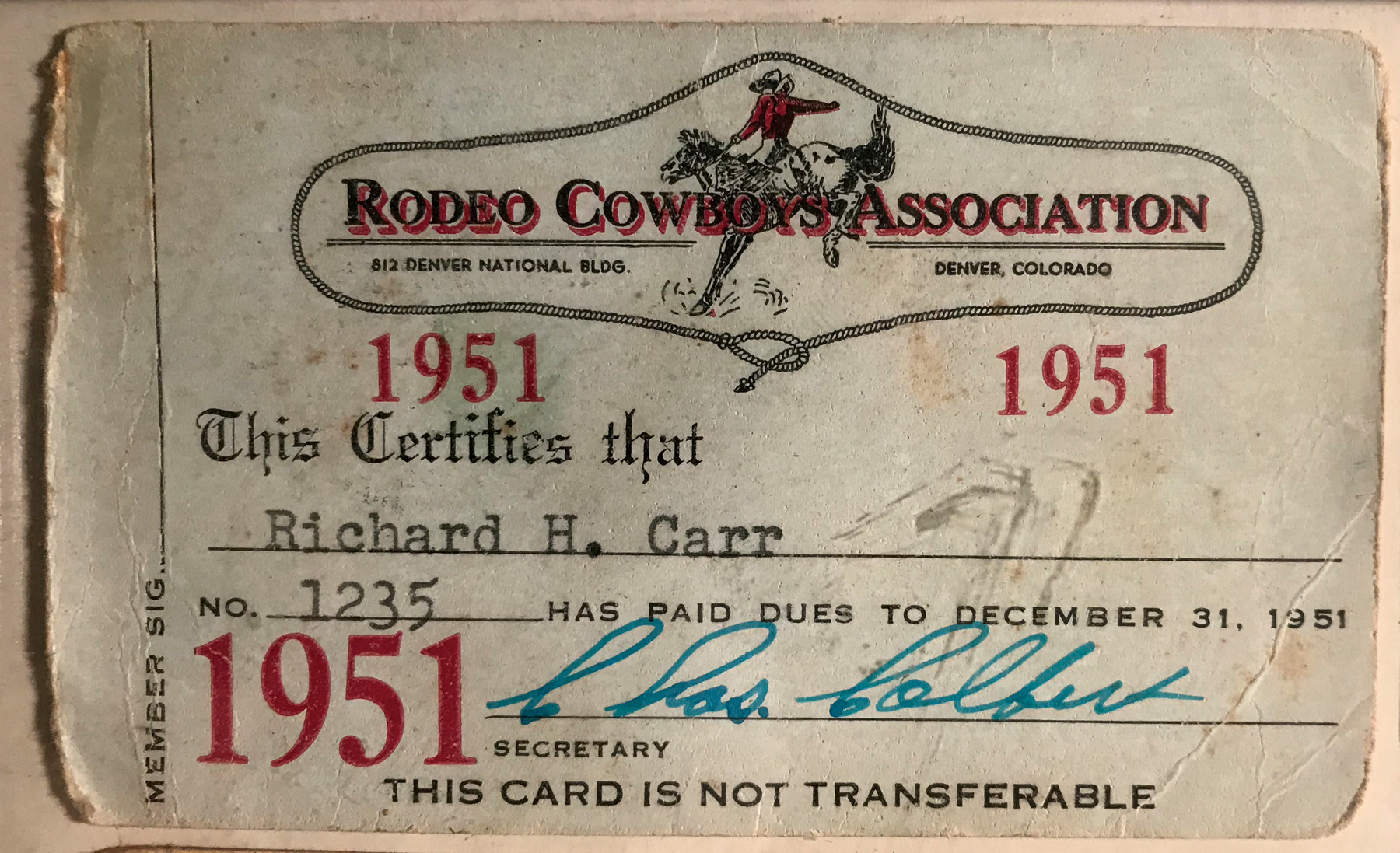
Dick Carr got his PRCA card in 1951, the number was later changed from 1235 to 166. (Photo courtesy of Dick Carr)
“You have got to be tough to be a cowboy,” he added.
He rode bareback and saddle broncs along with bulls, but he did not have the money to purchase a saddle.
“Saddles then were expensive—$100 was a lot of money,” Carr explained. “I had to give up bronc riding because when I got home, the whole world was spinning. I got hung up across the saddle, and the horse was spinning. I said, ‘God, if you’ll get me off here, I’ll promise I’ll never get on another bucking horse,’ and I never got on another saddle bronc.”
Carr was successful as a bareback bronc rider, but he preferred riding bulls. At 17 years old, the secretary at a rodeo in Waxahachie, Texas, told the young cowboy he needed to join the Professional Rodeo Cowboys Association to ride in that rodeo. When he started riding professionally, Carr said there were about 300 professional bull riders in the United States.
After graduating high school, the professional bull rider traveled with a fellow bull rider to rodeos in South Dakota, Nebraska, Colorado, Kansas, Texas, among other states, on the weekends. When he was not traveling to rodeos, Carr worked at the cotton gin but dreamed about competing at the Madison Square Garden Rodeo.
“That was the biggest rodeo,” he added. “That was just like going to the National Finals Rodeo now.”
Carr had a chance to compete with other professionals at the Madison Square Garden Rodeo in New York City when he was 18. The rodeo cowboy was at a rodeo in Pueblo, N.M., but he did not have any money. He drew an exceptional bull but was bucked off.
“It broke my heart,” Carr recalled. “I didn’t have the money to enter New York, and the fees closed the next day—$75 had to be paid before you were entered. The rodeo was still two or three weeks away, so I missed New York. The next year, I made sure that I had enough money to go.”
He continued to compete at the Madison Square Garden Rodeo as well as other major rodeos for the next several years, but his most memorable ride was at West Monroe, La., in 1954 on the bull that bucked off the world champion. The bull even bucked off Carr the year prior, but he received advice from an old cowboy.
“This old man who still rode bulls told me how to pull on a rope,” he recalled. “This bull had funny methods, and he said, ‘Put your hand right in the middle of his back and don’t pull it real tight.’”
The small bull bucked and hooked the riders. When Carr rode him in 1954, the bull jumped and spun to the left.
“He always gets you on the inside of the spin; he was always bad about that,” Carr added. “You would think because I put a rope over there that I was going to go farther over there. Everybody else pulled the rope trying to stay out of the inside of the spin, but I got in there with him.
“When he turned to the right, I looked to the left. When he turned to the left, I looked to the right. On the fourth jump, he looked to the left, I looked to the right and he got it. I rode him just so easy like it was nothing. When I stepped off, I undid my rope, jumped off and stepped right up on the fence, and he was still spinning.”
Carr was drafted into the U.S. Navy in 1956, serving in China and Australia. He returned a year later and set his sights on the arena. As all good things must come to an end, Carr gave up bull riding at the age of 25. However, he did return to the arena eight years later. The former professional bull rider picked up the art of making bull riding ropes at an early age, a skill he continues to use today.
Find the complete story in the January 2018 issue of Oklahoma Farm & Ranch.
Country Lifestyle
Riding for the Brand
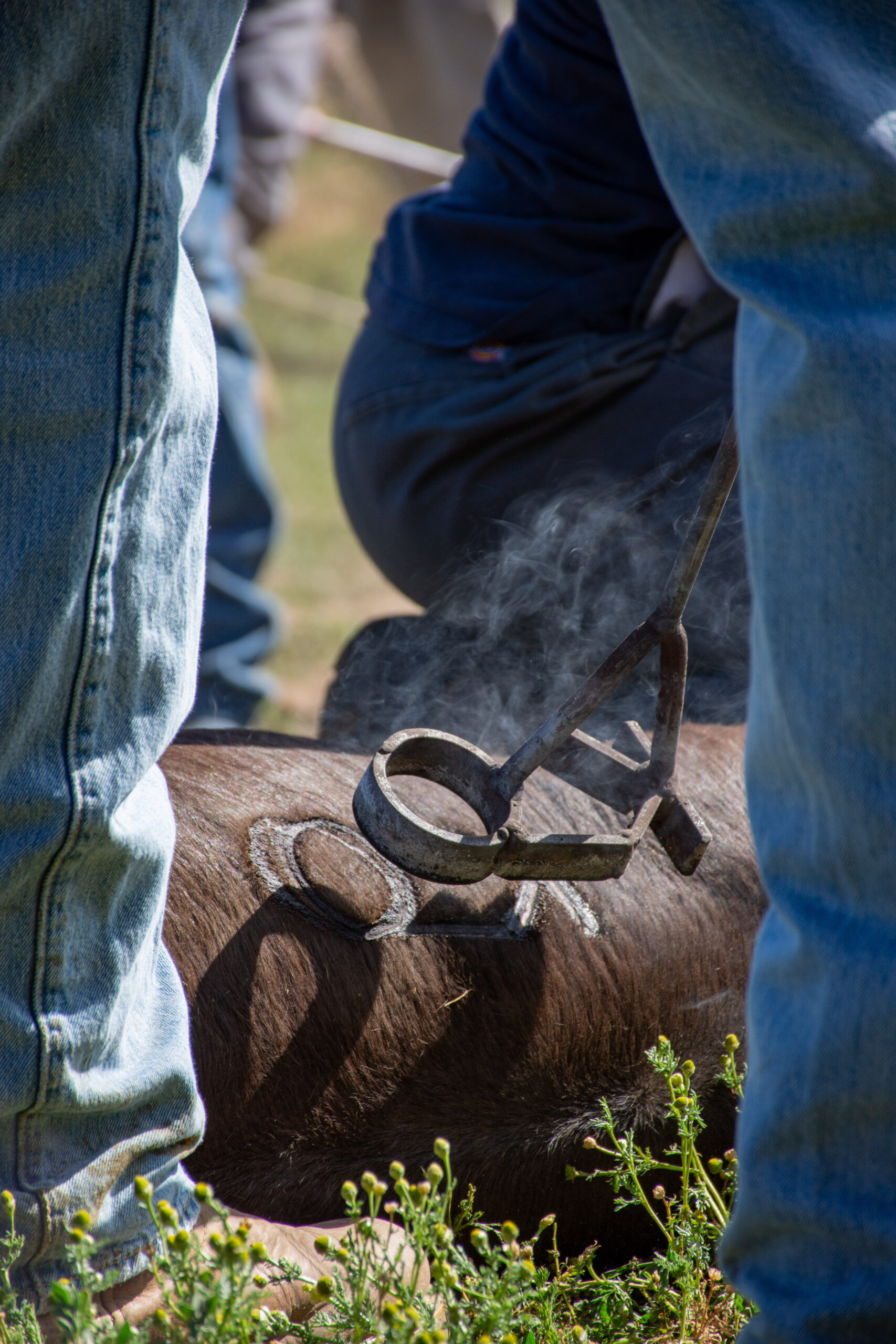
By: Christopher Dysinger
According to the Code of the West a man who has integrity is one who rides for the brand. If you are unfamiliar with cowboy parlance this phrase is used to describe being loyal to the outfit you work for. Cowboys were, “intensely loyal to the outfit they were working for and would fight to the death for it. They would follow their wagon boss through hell and never complain.” -Teddy Blue Abbot. Riding for the brand means being loyal and when I consider what it means to be loyal I am reminded of the words of the Lord Jesus to His disciples in Matthew 16:24, “Then said Jesus unto His disciples, If any man will come after Me, let him deny himself, and take up his cross and follow Me.” To me, to take up the cross and follow the Lord is the epitome of what it means to ride for the brand.
When you place your trust in the Lord Jesus you are signing on to His outfit, to speak the language of the West. When you called upon the name of the Lord Jesus by faith, He saved you and from this point you are riding for His brand. In taking up your cross and following Him you have pledged to be loyal, and this means you face any hardship or trial like a cowboy on the trail moving the herd. Any complaint must be swallowed in the same way you would swallow a cup of coffee. When I hear our faith and loyalty to the Lord Jesus put into these terms it stirs something within me that moves me to keep right on riding for the brand.
Louis L’amour wrote, “Riding for the brand was an expression of loyalty to a man’s employer or the particular outfit he rode for. It was considered a compliment of the highest order in an almost feudal society. If a man didn’t like a ranch or the way they conducted their affairs he was free to quit, and many did; but if he stayed, he gave loyalty and expected it. A man was rarely judged by his past only by his actions. Many a man who came west left things behind him he would rather forget, so it was not the custom to ask questions. Much was forgiven if a man had courage and integrity and if he did his job. If a man gave less than his best, somebody always had to pick up the slack, and he was not admired.” It is the same when a person gives his or her heart to Jesus.
When you come to the Lord Jesus you are not judged by your past. When you come to the Lord Jesus, repenting of sin and seeking forgiveness, everything from your past is left behind. All will be forgiven. 1 John 1:9 reads, “If we confess our sins, He is faithful and just to forgive us our sins, and to cleanse us from all unrighteousness.” When you place your faith in the Lord Jesus you are promising to be loyal and in return you will receive the same. He has promised that He will never leave us or forsake us. When you walk with the Lord Jesus through life you are indeed, “riding for the brand.”
“Riding for the brand” is not just an expression of loyalty nor is it just an expression of pride, it is also an expression of love. When a cowboy claims to be riding for the brand, he is telling any other outfit who may seek his loyalty, that he cannot give it, because he has given his word to another. It is the same when we pledge our faith and loyalty to the Lord Jesus. If any would call us away from Christ we cannot go, because we are riding for the brand.
The End
This article is an excerpt from the book, The Bible and the Code of the West by Dr. Christopher Dysinger.
Country Lifestyle
Farm Dogs & Table Scraps
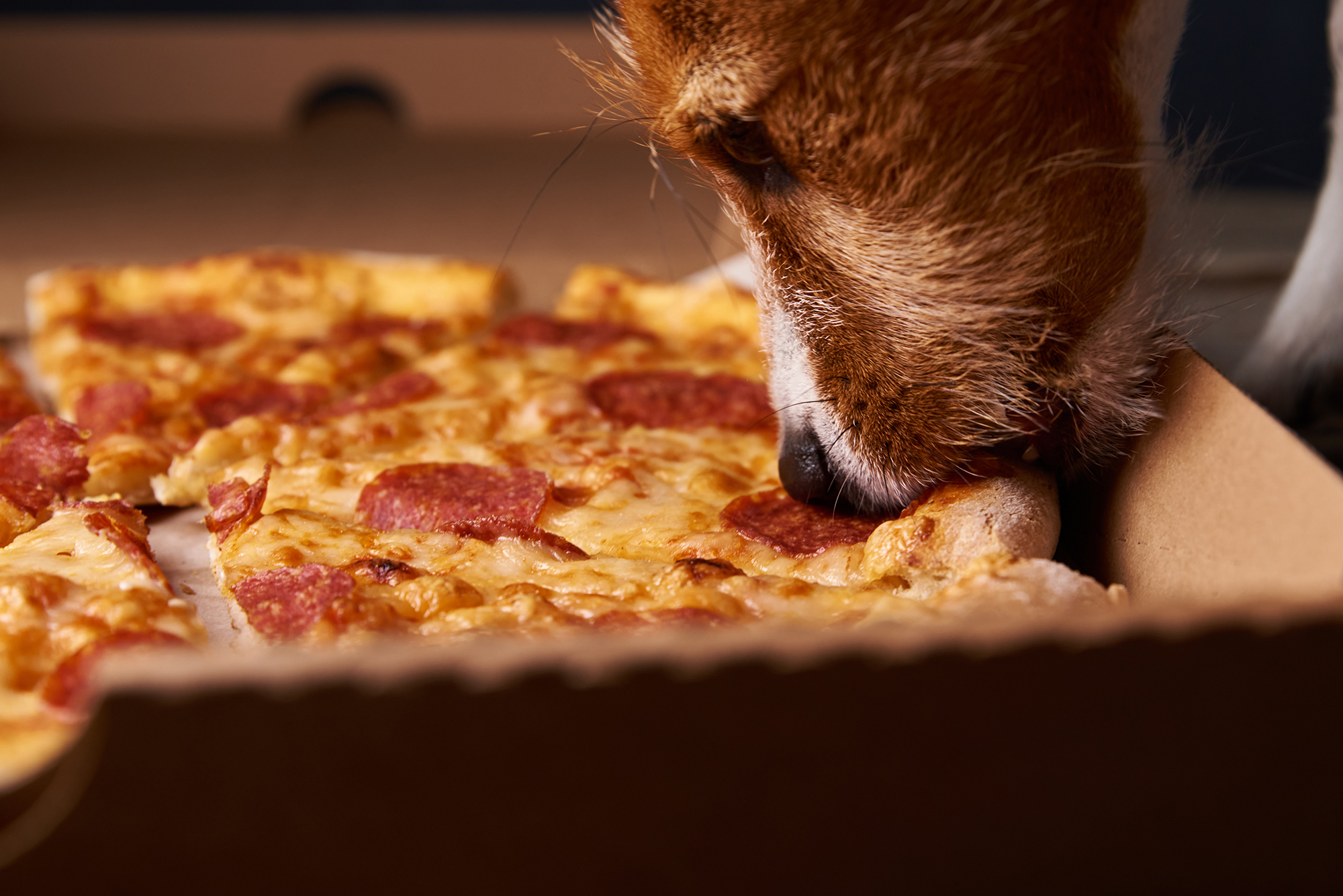
What’s Safe and What’s Not?
Growing up on a farm, our dogs were tough. They roamed the pastures, slept under the barn, and ate just about anything they could get their paws on—whether we meant for them to or not. I’ll admit, I never thought twice when one of our old cow dogs snatched a biscuit off the table or licked up a spill from the barn floor. I’ve even seen a dog steal a whole rib bone off a plate and trot off like he’d won the lottery. And somehow, they always seemed fine.
But here’s the thing—just because they survived doesn’t mean it was safe. For every farm dog that lucked out, there’s another that wasn’t so fortunate. Some human foods can be downright toxic to dogs, and a little bit of bad luck (or a smaller, more sensitive dog) can turn a harmless snack into an emergency.
Common toxic foods lying around the farmhouse
If you’ve got a farm dog—or any dog, really—you need to be aware of the dangers lurking in everyday foods. Some of the biggest culprits include:
Chocolate – The darker it is, the worse it is. Even a little can cause vomiting, seizures, or worse.
Grapes & Raisins – No one’s exactly sure why, but they can cause kidney failure fast.
Onions & Garlic – In large enough amounts, these can destroy red blood cells, leading to anemia.
Xylitol (Found in Sugar-Free Gum & Candy) – This artificial sweetener can send a dog’s blood sugar crashing and cause liver failure.
Alcohol – Even small amounts can be deadly to dogs, affecting their nervous system much more than it does ours.
Bones from Cooked Meat – While not necessarily toxic, they can splinter and cause serious internal injuries.
Macadamia Nuts – These can lead to weakness, vomiting, and even paralysis in dogs.
What to do if your dog eats something toxic
First, don’t panic—but don’t ignore it either. If you know your dog ate something dangerous, call your vet immediately. They can tell you whether to induce vomiting or if it’s something that requires urgent care. If it’s after hours, contact the ASPCA Animal Poison Control Center (888-426-4435) or the Pet Poison Helpline (855-764-7661).
Prevention is always the best medicine, so keep toxic foods out of reach. That might mean keeping the trash can secured, making sure kids don’t slip the dog a treat under the table, or just being more mindful of what’s left on the counter.
Our farm dogs might have been lucky, but luck isn’t a great strategy when it comes to their health. A little awareness goes a long way in making sure they stay happy, healthy, and ready for the next day’s work.
For more information
ASPCA Animal Poison Control: www.aspca.org/pet-care/animal-poison-control
Pet Poison Helpline: www.petpoisonhelpline.com
Visit www.akc.org/expert-advice/nutrition/foods-your-dog-should-never-eat
Country Lifestyle
Summer Squash and Corn Chowder

By Lacey Vilhauer
Total time: 40 minutes
Servings: 6-7
Ingredients
- 6 slices bacon, cooked and crumbled and 1 1/2 Tbsp rendered bacon fat reserved
- 1 1/2 lbs yellow squash, chopped (about 3 medium)
- 2/3 cup thinly sliced celery
- 1 cup diced onion
- 1 Tbsp flour
- 2 cloves garlic, minced
- 2 3/4 cup milk (I used 1%)
- 5 cups canned or fresh cut corn (from about 6 ears corn), divided
- 1/2 cup heavy cream
- 1 1/2 tsp chopped fresh thyme (or 1/2 tsp dried)
- 3/4 tsp salt, then more to taste
- 1/4 tsp freshly ground black pepper, then more to taste if desired
- 3/4 cup shredded cheddar cheese, for serving
- Chopped green onion for garnish (optional)
Instructions
Heat 4 tsp reserved bacon fat in a large pot over medium-high heat. Add celery and onion and sauté 2 minutes then add the squash.
Saute until tender, about 6 minutes, adding in garlic and flour during last 2 minutes of sauteing. Reduce heat slightly.
Add 1 1/2 cups milk, 2 cups of the corn, thyme, salt and pepper to the sauteed veggies.
To a blender add remaining 3 cups of corn, remaining 1 1/4 cups milk and the cream. Process in blender until nearly smooth (about 30 seconds).
Add pureed mixture to pot and stir to blend. Cook until mixture reaches a light boil.
Serve warm with shredded cheese, crumbled bacon and sliced green onions if desired.
-

 Attractions8 years ago
Attractions8 years ago48 Hours in Atoka Remembered
-
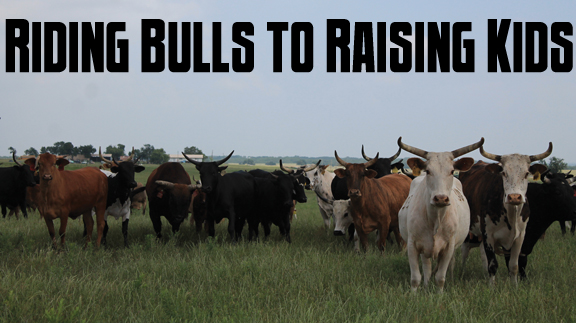
 Country Lifestyle11 months ago
Country Lifestyle11 months agoJuly 2017 Profile: J.W. Hart
-
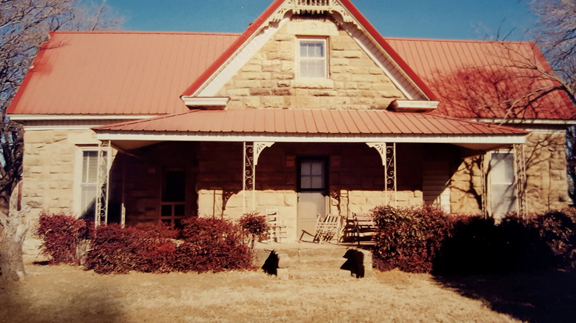
 Country Lifestyle9 years ago
Country Lifestyle9 years agoThe House a Treasure Built
-
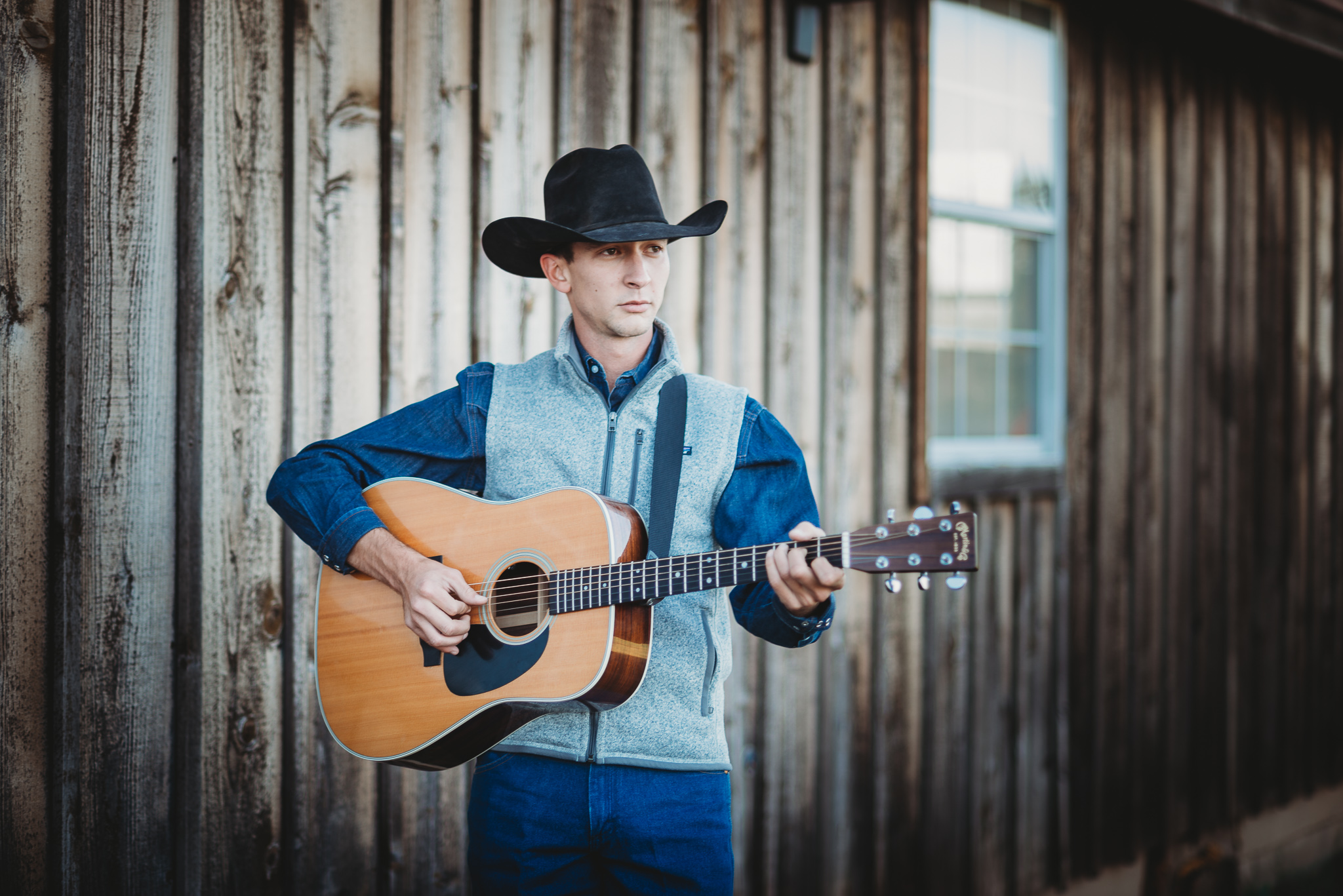
 Country Lifestyle4 years ago
Country Lifestyle4 years agoThe Two Sides of Colten Jesse
-
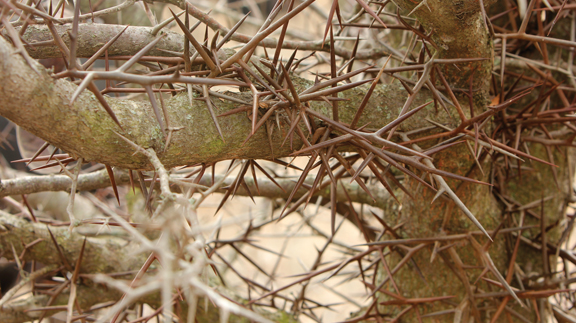
 Outdoors7 years ago
Outdoors7 years agoGrazing Oklahoma: Honey Locust
-
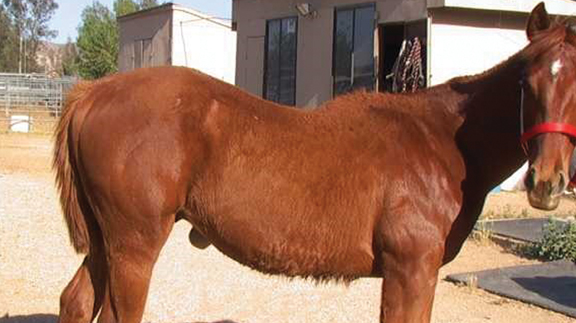
 Equine8 years ago
Equine8 years agoUmbilical Hernia
-
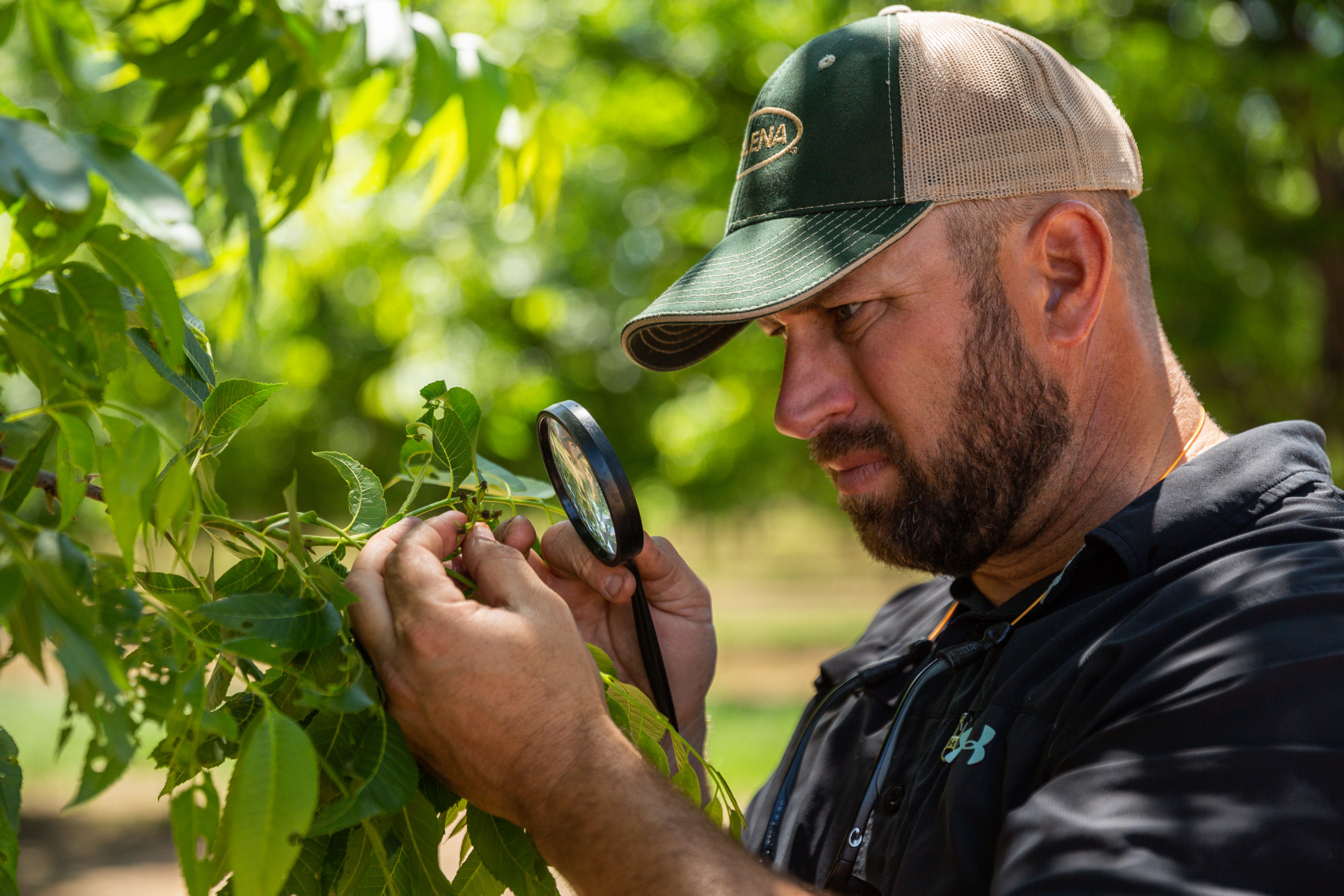
 Outdoors5 years ago
Outdoors5 years agoPecan Production Information: Online Resources for Growers
-
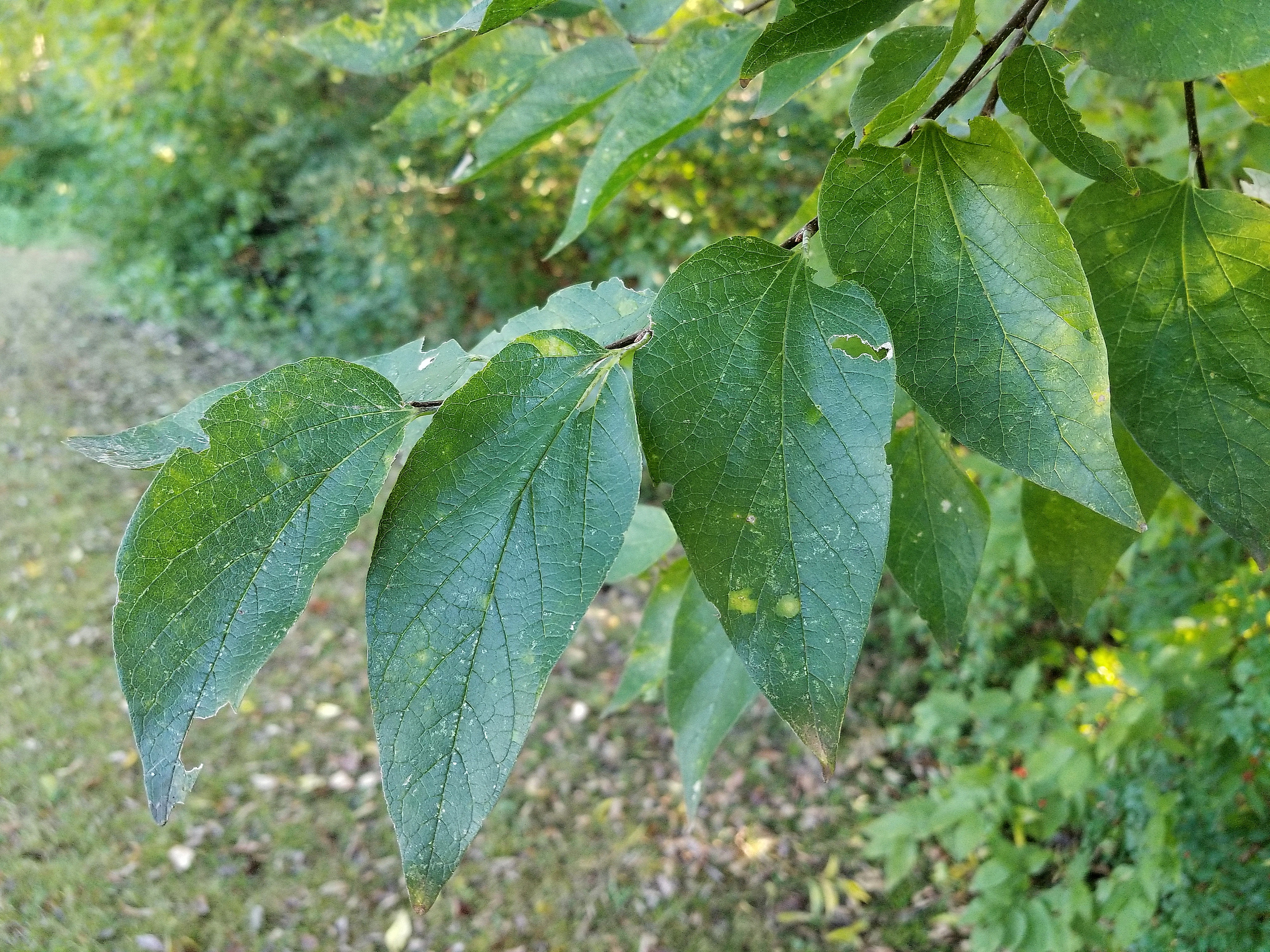
 Farm & Ranch7 years ago
Farm & Ranch7 years agoHackberry (Celtis spp.)
